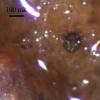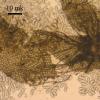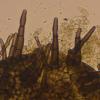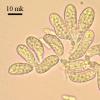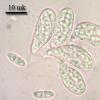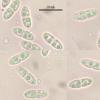
12-12-2025 18:39
Mirek GrycHello everyone.Macrofeatures similar to Mollisia b

09-12-2025 12:06
 Andgelo Mombert
Andgelo Mombert
Bonjour,Je recherche l'article concernant Hypobryo

07-12-2025 16:07
Arnold BüschlenHallo, ich habe in einer Moos-Aufsammlung (epiphy

08-12-2025 21:04
Mark Stevens"Hello everyone,I'm relatively new to microscopy (

08-12-2025 18:59
 Lothar Krieglsteiner
Lothar Krieglsteiner
.. found by a seminar-participant, I do not know t

08-12-2025 17:37
 Lothar Krieglsteiner
Lothar Krieglsteiner
20.6.25, on branch of Abies infected and thickened
i am currenly working with collection of Perithecia-forming species inhabiting Andromeda leaf litter. My orientation in the systematic space of this group is still poor. Could you possibly give me a clue on approximate position of this representative?, it seems beautiful and distinctive one.
On fallen leaves of A. polifolia, C. calyculata, L. palustre in raised bog community.
Ascomata scattered on both sides of the leaf, sphaerical, superficial, setose around the pore, and with descending hyphae in lower part, up to 150 mk in diameter.
Setae brown, septate, thick-walled, straight and short near the pore, bent and longer outward, 40-80 mk long, 8 mk broad at base, narrowing to obtuse tip; descending hyphae brown, septate, about 1 mk broad; asci clavate, attached to stalks which connected together in bunches, 20–23 x 8–9.6 mk, dehiscence mode unclear; hamathecium from elongated thin elements surrounded by gelatinous substance; spores hyaline, two-celled, with deep constriction, with many small to medium oil guttules, measured in vital state 10 (9–1.8) x 3.5 (3.3–3.9) mk (n=22).
i am still searching any information about this taxon. It is puzzling ). It may belong to Mycosphaerellaceae because absence of paraphyses, two-celled hyaline spores and fasciculate asci. But i could not decide any precisely about genus and species.
Nina.

Check von Arx and Müller (1975) Studies in Mycology n°9 (available here: http://www.cbs.knaw.nl/index.php/studies-in-mycology/378-studies-in-mycology-no-9).
Did you noticed the presence of superficial hyphae too? Could be a Wentiomyces or Epipolaeum species, but the habitat is uncommon and both are more frequently found on live leaves. Aditionally, Epipolaeum has coloured ascospores, and your specimen appears to be hyaline, at least initially.
Good luck.
